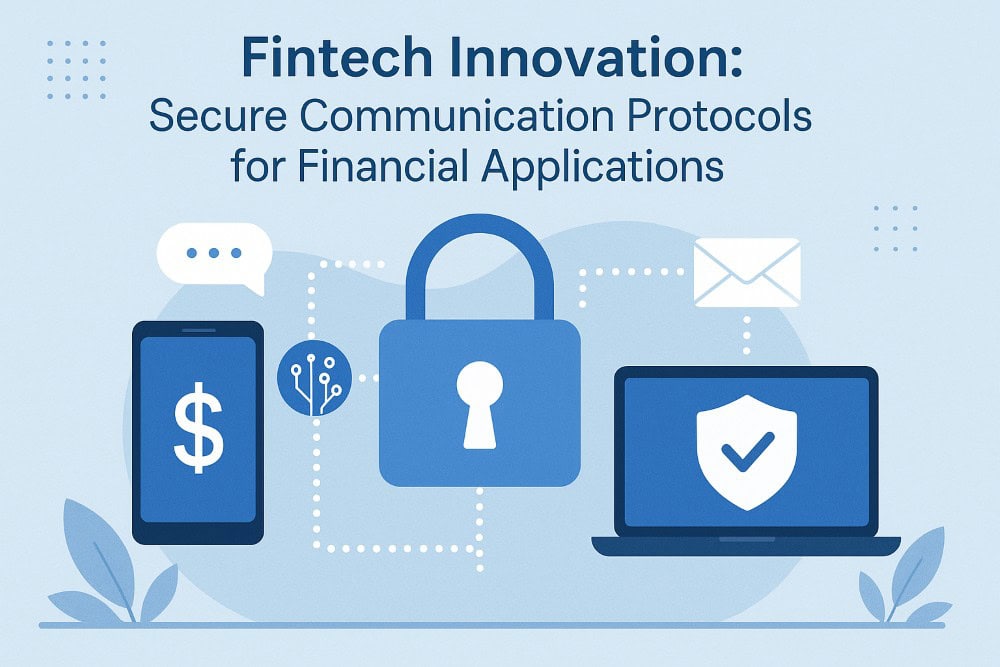The security of data in transit is as important as the integrity of the financial systems themselves in the fintech industry. Financial apps manage sensitive transaction tokens that could result in serious security breaches. Every business operating in this realm needs to use secure communication protocols to protect against cyberattacks, maintain customer trust, and adhere to legal requirements.
This article illustrates how to integrate cutting-edge proxy technologies and highlights the crucial role that secure communication protocols play in fintech applications.
The Need for Secure Communication in Fintech
Fintech’s appeal to cybercriminals increases with its growth. Your attack surface grows as you scale your services, whether via mobile platforms, web apps, or APIs. There is a risk associated with each connection, user session, and data transaction. Strong communication protocols are essential, not optional.
How Proxies Complement Secure Protocols
Proxy servers shield your infrastructure from exposure, while encryption prevents data from leaking. By dispersing requests, hiding IP addresses, and assisting in the detection of malicious activity, a proxy serves as a barrier between the client and the server. Proxies are crucial in finance for fraud detection, safe API routing, and scalability in the face of heavy traffic.
In situations where users access services from different locations or devices, obtaining mobile proxies or residential proxies can maintain security and anonymity without disrupting connectivity.
These tools also aid in geo-compliance efforts. They enable you to route requests through region-specific IP addresses, guaranteeing compliance with local legislation and increasing access speeds for foreign users.
The Unique Features of SOCKS5 Proxies
Complex finance systems enjoy SOCKS5, a flexible proxy protocol that supports a variety of communication types, including TCP and UDP. These proxies provide unparalleled anonymity and stability when used with residential IPs.
SOCKS5 residential proxies are among the most dependable solutions for fintech requirements. By using these tools, you may carry out safe, region-specific tasks like account validation. Additionally, API scraping and compliance testing without disclosing your actual infrastructure is also possible through them.
Realistic Fintech Security Use Cases
To confirm geographic validity, you can use a SOCKS5 residential proxy to relay login attempts or transaction requests. You can start extra authentication procedures if a request originates from an unexpected source. Filtering like this is quite helpful in preventing fraud.
Gathering Market Information and Analyzing Competition
Fintech platforms combine information from several financial services or exchanges. Secure, anonymous data scraping across several locations is accessible using proxies. By avoiding rate constraints and geo-blocks, SOCKS5 residential proxies allow you to gather precise, localized data without informing vendors or rivals.
Benefits of Using Proxies and Secure Protocols Together
When you incorporate proxies with secure communication protocols into your financial stack, you may reap several benefits. Among those are:
- Double-Layered Security: Anonymized routing protects against tracking and data interception.
- Decreased Vulnerability to Attacks: Proxies can make it more difficult for hackers to target you.
- Enhanced Performance: In worldwide services, distributed proxy nodes lower latency and balance traffic.
- Flexibility in Testing and Compliance: You can model operations in several jurisdictions without going against regional access regulations.
The Best Methods for Integrating Secure Proxy
Not sure how to integrate this technology into your finance stack? When using secure protocols and proxies, remember the following:
- For stronger encryption, always use TLS 1.3.
- Use SOCKS5 residential proxies to preserve anonymity.
- Utilize access control lists to restrict proxy access to trustworthy endpoints.
- Keep track of proxy usage and encrypted sessions for compliance purposes.
- Avoid free proxy services since they lack encryption and pose data threats.
Important Procedures for Safeguarding Financial Communications
TLS (Transport Layer Security) encrypts data as it moves between users. Strong data shielding techniques are common in TLS to make sure that there is no traffic visible for hackers to intercept. This is fundamental to fintech; no login or transaction should take place without TLS protection.
OpenID Connect and OAuth 2.0 for Identity and Access
Authorization is as important as authentication. OpenID Connect adds identity verification, while OAuth 2.0 allows third-party apps to access user accounts without disclosing passwords. Fintech apps use these protocols to link users to third-party payment processors, investing platforms, and digital wallets.
Safe WebSockets for Immediate Applications
Real-time updates are essential for fintech systems like cryptocurrency exchanges and FX trading applications. Clients and servers can connect well with Secure WebSockets (WSS). By implementing this approach, latency is reduced, and financial data remains secure during continuous streaming.
Conclusion
Some of the most private information on the internet belongs to fintech sites. It stands to reason that these platforms need security integrated into every corner to keep a high confidence level from their users. Secure communication protocols such as TLS, OAuth, and WSS serve as the cornerstone, but your defense approach rises when you combine them with intelligent proxy solutions. An architecture that is safe and compliant exists by integrating anonymized routing, authentication, and encryption.

